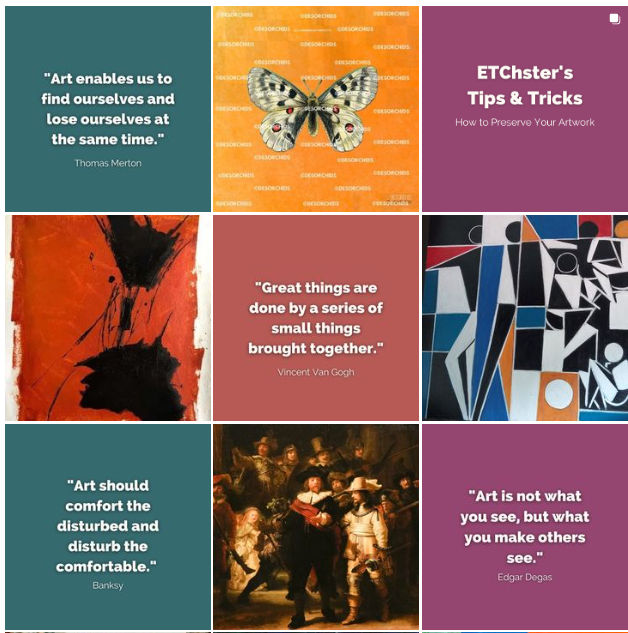Starting an art business can be an exciting and fulfilling venture. However, it also comes with its fair share of challenges. From establishing a customer base to managing finances, there are several hurdles that aspiring artists-turned-entrepreneurs need to overcome. In this article, we will discuss the top five challenges faced by individuals starting an art business. We will then provide practical solutions to help navigate through them.
Finding Your Niche
One of the primary challenges artists face when starting a business is defining their niche in a competitive market. It’s crucial to stand out from the crowd and develop a unique artistic style that resonates with your target audience.
Solution:
- Conduct thorough market research: Study the existing art market to identify gaps or untapped areas that align with your interests and skills.
- Identify your unique selling point (USP): Determine what sets you apart from other artists and emphasize it in your marketing efforts.
- Develop a signature style: Experiment with different techniques and mediums to discover your own artistic voice, which will help you attract a specific audience.
Building a Customer Base for Your Art Business
Establishing a loyal customer base is essential for the long-term success of any art business. However, reaching potential customers and gaining their trust can be a significant challenge, especially for new artists.

Crista Cloutier Has More Tips For You
Solution:
- Leverage social media: Utilize platforms like Instagram, Facebook, and Pinterest to showcase your artwork. Use these to interact with followers, and engage with art communities. (Pro Tip: A free artist website can add an extra dimension to your online presence)
- Participate in art exhibitions and local events: Displaying your work at galleries or participating in local art fairs can help you connect with art enthusiasts and art collectors.
- Collaborate with other artists or businesses: Join forces with complementary artists or local businesses to cross-promote each other’s work and expand your reach.
Managing Finances When Starting an Art Business
Handling finances is a common challenge faced by many artists-turned-entrepreneurs. From pricing artwork to budgeting for supplies and managing cash flow, financial management requires careful attention.
Solution:
- Set realistic prices: Research the market value of similar artworks and consider factors such as materials, time invested, and your level of expertise when determining the prices for your art.
- Create a budget: Develop a comprehensive budget that covers art supplies, marketing expenses, studio rent, and other business-related costs. Regularly review and adjust it as necessary.
- Seek professional advice: Consult with an accountant or financial advisor who specializes in working with artists to gain insights into tax obligations, record-keeping, and financial planning.
Marketing and Promoting Your Art Business
As The 12 Million Dollar Stuffed Shark says, promoting your art business effectively can be a significant hurdle, as it requires a blend of creativity and strategic thinking. Without proper marketing, your talent may remain unnoticed by potential buyers, including some of the large corporate buyers like the Fidelity Investments Art Collection.

Solution:
- Build an online presence: Develop a professional artist website or online portfolio to showcase your artwork, share your story, and provide contact information for interested buyers.
- Engage with your audience: Actively interact with followers and respond to comments and inquiries promptly. Engaging with your audience can help foster a sense of connection and build a loyal following.
- Set an artist email signature: As an artist growing your art business, setting your Gmail signature is easy and a great way to reintroduce your brand over and over to people with whom you correspond.
- Collaborate with influencers or art bloggers: Partner with influential individuals in the art community or collaborate with art bloggers to amplify your reach and gain exposure to their audience.
Balancing Creativity and Business
Finding a balance between pursuing your artistic vision and managing the operational aspects of running a business can be a significant challenge. Artists often struggle with allocating time for both creating art and attending to administrative tasks.
Solution:
- Set clear boundaries and schedules: Establish dedicated time for creating art and separate it from your business-related responsibilities. Creating a structured routine will help maintain a healthy work-life balance.
- Delegate or outsource certain tasks: Identify areas of your business that can be outsourced, such as bookkeeping or social media management, to free up more time for your creative pursuits.
- Continuously learn and improve: Invest time in learning about business strategies, marketing techniques, and productivity tools that can streamline your operations and help you optimize your time.
ETChster’s Tips and Tricks for Starting an Art Business
To make opening an art business easier, consider the following tips and tricks:
- Network with fellow artists and professionals in the industry to gain valuable insights and support.
- Take advantage of online courses or workshops to enhance your artistic skills and business acumen.
- Attend art-related events, exhibitions, and workshops to stay updated with the latest trends and connect with potential customers.
- Establish a strong online presence by consistently sharing your work and engaging with your audience on social media.
- Embrace constructive criticism and feedback as opportunities for growth and improvement.
Starting an art business may pose various challenges, but with the right strategies and a resilient mindset, these hurdles can be overcome. By finding your niche, building a customer base, managing finances effectively, implementing a robust marketing strategy, and balancing creativity with business operations, you’ll be on the path to success. Remember, persistence, continuous learning, and staying true to your artistic vision will be key to achieving your goals as an art entrepreneur.

